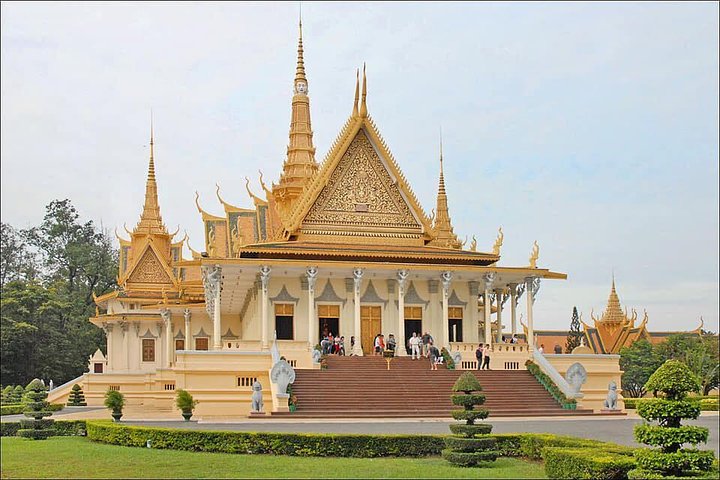Phnom Penh: A Cultural Odyssey Through Cambodia’s Capital
Embark on a journey through Phnom Penh, where history and culture intertwine. Discover the city’s royal heritage, reflect on its poignant past, and embrace its vibrant present.
A Journey Through Time: The Royal Palace and Silver Pagoda
As the sun rose over Phnom Penh, I found myself eagerly anticipating the day’s adventure. The city, with its vibrant energy and rich history, promised a journey through time and culture. My guide, Mr. Sam, arrived promptly at my hotel, and we set off in a spacious vehicle that felt like a private tour just for me. Our first stop was the Royal Palace, a symbol of Cambodia’s enduring monarchy and a testament to its architectural grandeur.
Walking through the palace grounds, I was struck by the intricate details of the Throne Hall and the Napoleon Pavilion. Each structure told a story of Cambodia’s past, from the days of the Khmer Empire to the present. The Silver Pagoda, with its floor made of thousands of silver tiles, was a sight to behold. The pagoda houses a collection of national treasures, including a life-sized gold Buddha adorned with diamonds. It was a reminder of the country’s rich cultural heritage and the resilience of its people.
Mr. Sam’s knowledge of the palace’s history was impressive. He shared stories of the kings who once walked these halls and the ceremonies that took place here. It was a humbling experience to stand in a place that has witnessed so much history. As we left the palace, I felt a deep sense of respect for the traditions and customs that continue to shape Cambodia today.
Reflecting on the Past: Tuol Sleng and Choeung Ek
Our journey took a somber turn as we visited the Tuol Sleng Genocide Museum and the Choeung Ek Genocidal Center. These sites, once places of unimaginable horror, now serve as memorials to the victims of the Khmer Rouge regime. Walking through the former high school turned prison, I was overwhelmed by the stories of those who suffered here.
The museum’s exhibits, including photographs and personal accounts, painted a vivid picture of the atrocities committed during this dark chapter in Cambodia’s history. It was a stark reminder of the importance of remembering the past to prevent such tragedies from happening again. At Choeung Ek, the mass graves and the stupa filled with human skulls were haunting. Yet, amidst the sorrow, there was a sense of hope and healing.
Mr. Sam guided me through these sites with sensitivity and respect, providing context and insight into the events that unfolded here. It was a difficult but necessary part of the tour, one that left a lasting impact on me. As we left Choeung Ek, I reflected on the resilience of the Cambodian people and their commitment to moving forward while honoring their past.
Embracing the Present: Independence Monument and Wat Phnom
The final leg of our tour brought us to the Independence Monument and Wat Phnom, two landmarks that celebrate Cambodia’s journey towards peace and prosperity. The Independence Monument, standing tall in the heart of the city, commemorates Cambodia’s liberation from French colonial rule. It was a powerful symbol of the country’s sovereignty and determination.
Wat Phnom, a temple perched atop a small hill, offered a serene escape from the bustling city below. The temple, built in 1372, is a place of worship and reflection. As I climbed the steps to the top, I was greeted by the sight of locals and tourists alike, paying their respects and enjoying the peaceful surroundings.
Throughout the day, Mr. Sam provided cold water and fresh bananas, a thoughtful touch that kept me refreshed in the tropical heat. His guidance and expertise made the tour an enriching experience, one that I would highly recommend to anyone visiting Phnom Penh. While the tour was comprehensive, I couldn’t help but wish for a visit to the National Museum, a treasure trove of Angkor artifacts that would have complemented the day’s journey.
In conclusion, the Phnom Penh City Tour was a profound exploration of Cambodia’s vibrant capital, offering a glimpse into its past, present, and future. It was a reminder of the importance of cultural preservation and the power of storytelling in bridging the gap between history and modernity.


















































